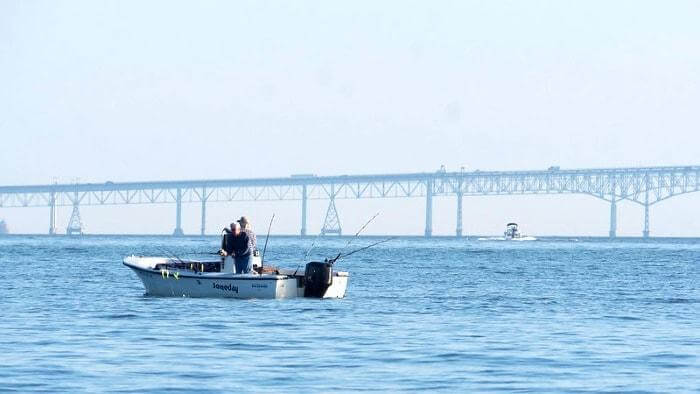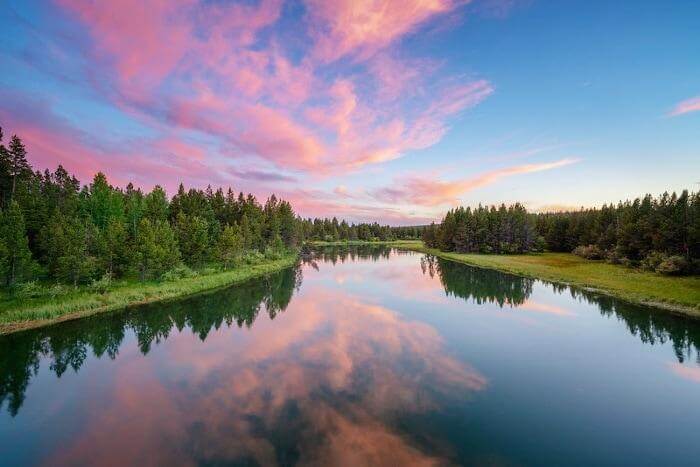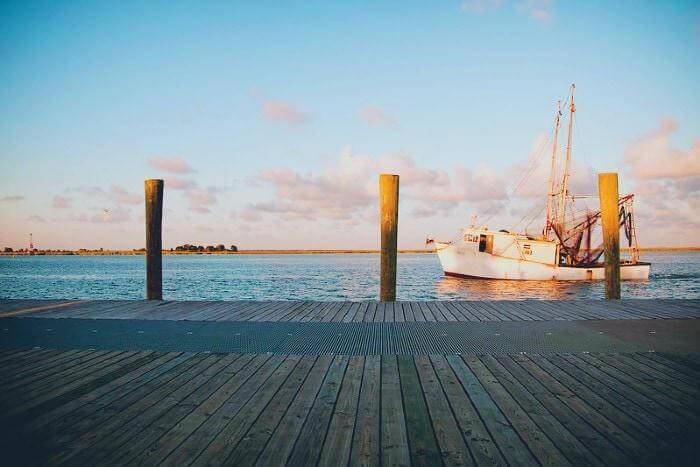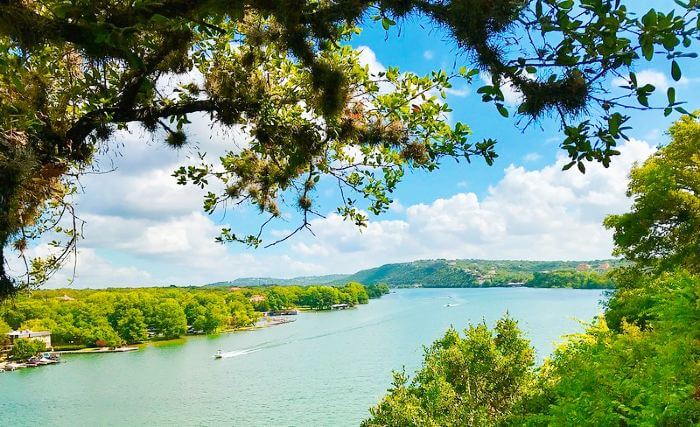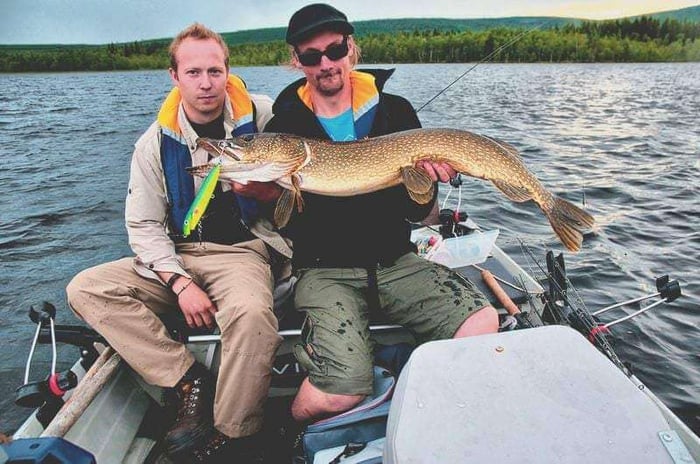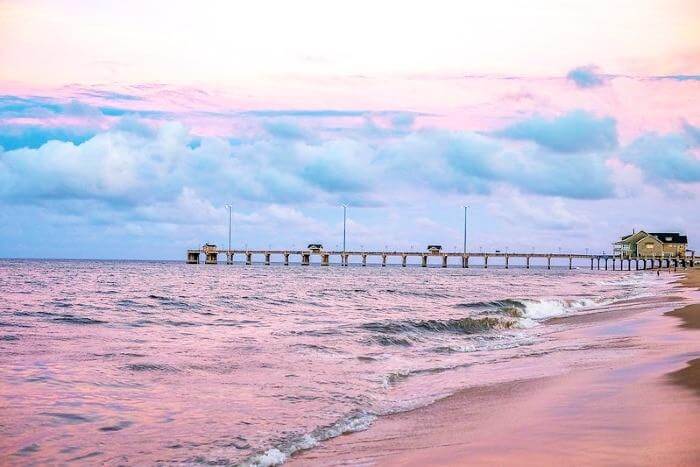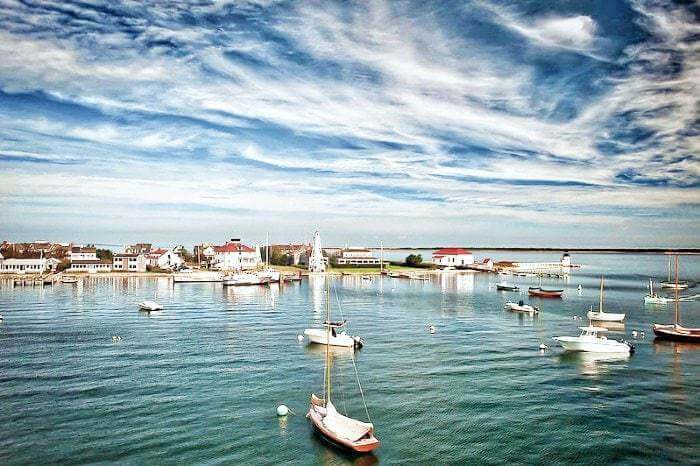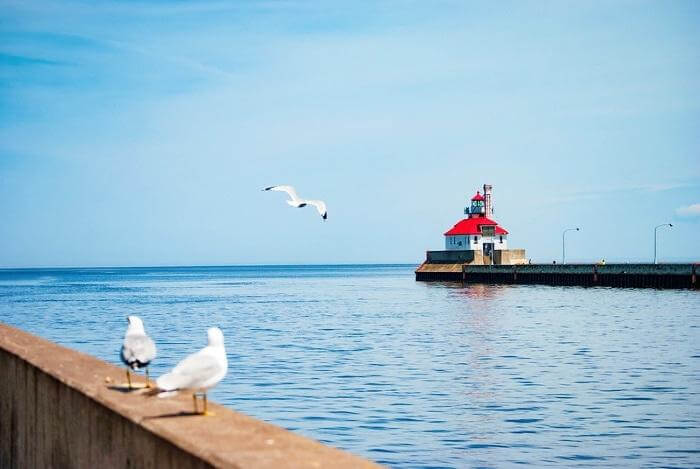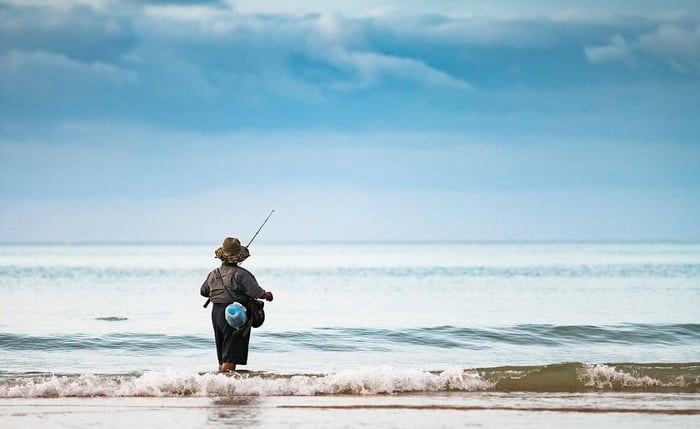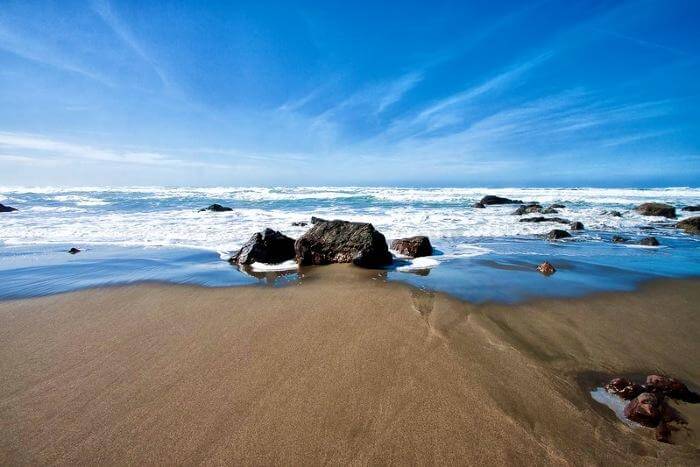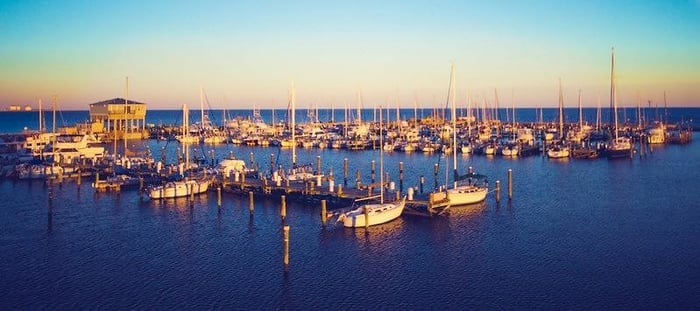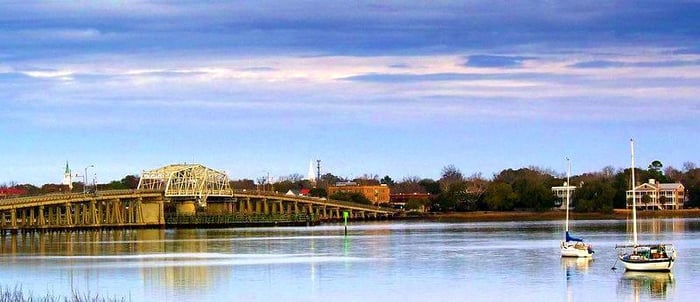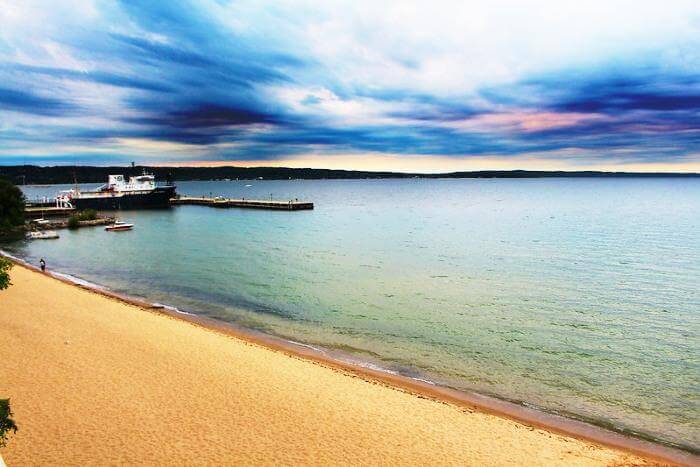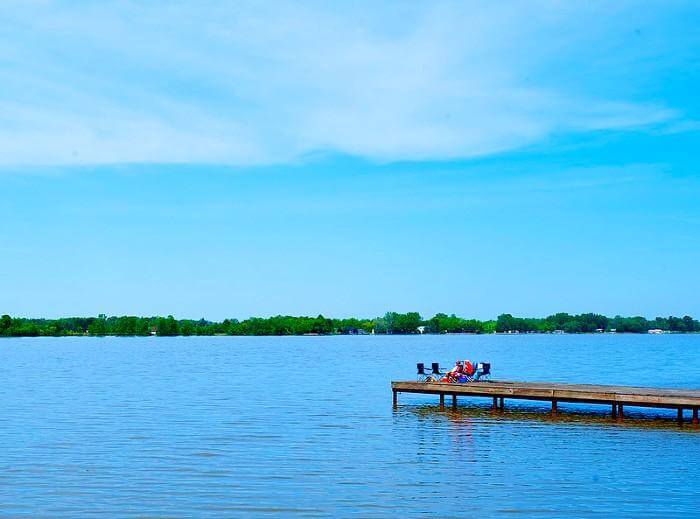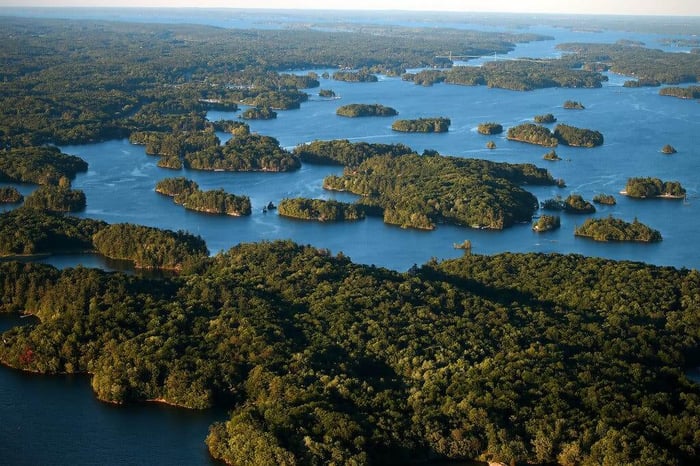Quick fact, almost a fourth of the Free State is made up of water, which means much fish! Thanks to the largest estuary in the United States, the Chesapeake Bay in Maryland, you enjoy all angling experiences. It could be on the boat or even without stepping on a boat.
Four major rivers flow into the Chesapeake Bay and toward the Atlantic Ocean: the Potomac-Shenandoah River system, the Rappahannock River, the York River, and the James River. The freshwater from these and more than 150 other rivers join the saltwater from the Atlantic Ocean to form the Chesapeake Bay.
Not only is the Bay famous for seafood production, but it is the world’s notable for its quality, diversity, and scenic qualities. Whether you are spinning for striped bass in the Upper Bay or trolling for blues and Spanish mackerel in the Lower Bay, truly, Chesapeake Bay is one of the anglers’ top fishing charter destinations!
Many travelers and locals consider fishing in the Chesapeake Bay as an all-year sport. It is accessible, regardless of whether you’re in Baltimore, Maryland; Washington D.C.; or Virginia Beach, Virginia. When arranging your Chesapeake Bay fishing charter, it is highly recommended to wear layered garments, bringing your sunglasses, cap, and raincoat. Above all, savor your positive energy for an incredible day on the water!
Types of Fish To Catch in the Bay

Maryland and Virginia have several chances to look for trout and bass, but the Bay and its waterways supply an incredible fishery. The Chesapeake Bay has a wide range of kinds of fish, so one will undoubtedly indulge your preferences.
Striped bass, locally known as rockfish, are the most known and in-demand fish species in the Chesapeake Bay. While it fights hard on a hook and line, you can surely snatch one with its large, wide bucket of a mouth and vivid stripes. This distinct-looking fish is the official state fish of Maryland and the state saltwater fish of Virginia.
Although there are more than 350 large and small fish species in these waters, some are all-year inhabitants of the Bay, while others swim in and out for food, breed, or find shelter.
Below are some of the fish species you will find in the Bay.
-
- Black Drum
- Black Sea Bass
- Blue Catfish
- Bluefish
- Bluegill
- Bull Shark
- Carp
- Channel Catfish
- Crappie
- Croaker
- Flounder
- Largemouth Bass
- Red Drum
- Shad
- Sheepshead
- Spanish Mackerel
- Spot
- Striped Bass
- Tautog
- Trout
- Yellow Perch
Best Season to Fish in the Bay
As mentioned above, Chesapeake Bay fishing is accessible all year. Enjoy every opportunity to go Striped Bass fishing in April and May. Book a private Chesapeake Bay fishing charter early on as they get booked quickly throughout the spring season. Throughout the fall (explicitly October and November) is another best chance to fish the Bay as Rockfish (Striped Bass) are feeding mania before the cold weather gets in.
If you are a fan of trolling or jigging for Striped Bass, summer months are great for you! You can also have the chance of catching Perch, Spot, and perhaps some Black Drum too. In September, Bluefish and Spanish Mackerel are at their peak for trolling and jigging. If you are avid at bottom fishing, the fall season is an ideal opportunity to target Spot, Perch, Croakers, and Trout. Red Drum is likewise known to be accessible in the fall. Chesapeake Bay anglers are known to fish the edges and drop-offs of the Bay and some nearby streams in the colder time of year. The temperatures are out, but the fishing is burning!
Fishing in the Bay

Experience fishing in a location where anglers of all skills can fish! Start with a FishAnywhere Professional Charter Captain or Fishing Guide, and you will catch that first trophy of the day. You may also begin with your local tackle shop. It depends if you opt for the cheap route or the other way around.
There are specific areas that provide excellent Largemouth Bass fishing. Other popular fishing techniques for catching Striped Bass, Cobia, and Mackerel are trolling, bottom fishing, and jigging.
Fishing can be technical, but you do not need every fancy gear available. Listed below are the essential gears you need to start your day fishing.
- Fishing license, if you are older than 16 years old
- Rod, reel, and line
- Sinkers
- Hooks
- Bait
- Needle nose pliers with cutters to cut the line and help unhook fish
- Sunblock and other protective clothing
- Sunglasses (almost as important as a rod and reel)
Rod, reel, and line
A spinning rod and reel is the best gear to help you start fishing in the Chesapeake. These are the most effortless to cast and retrieve your lures, particularly for beginners. In the U.S, most spinning reels allow the angler to change the crank to whichever side is comfortable, regardless of whether you are left-handed or right-handed. The rod’s length should be around 7 feet, a medium size for longer casting, but too heavy like some surf rods, which can run from 8 to 14 feet.
The fishing line additionally offers various options. The best line for a beginner is monofilament since you can tie your hook rig right to it directly.
The light line in the 6 to 8-pound test breaking strength is incredible for harvesting perch. You can use a line-up to a 50-pound test for bigger fish. But smaller fish won’t be as much amusing to catch.
Sinkers
To start with, you will need to purchase split-shot or rubber-grip sinkers. These are easy to connect to the line, and you can remove them without cutting any knots. They come in different sizes. Greater loads will allow you to throw farther and get your bait down deep faster. In any case, the more weight you put on, the less sensibility you should feel a fish strike. Opt to use as little weight as you can pull off.
Hooks
The best hook size, to begin with, is a #4 or #6. Hook sizes get bigger as the size number goes down. As you get the hang of fishing and choose, you need to use more excellent bait, and you can climb to bigger hooks, going from #2 to #1/0, and on up to a #6/0 for large stripers out in deep water.
Baits
The go-to baits for fishing in the Chesapeake are worms/nightcrawlers, blood worms, and grass shrimp. Each fish in the area will happily bite down on these little pieces. You can dig up earthworms in your backyard or get them at a bait shop.
Techniques in Fishing in the Bay

Successful harvest in fishing is every angler’s goal. You sure can ace it in the abundant Chesapeake. But how do most people fish on the Bay? Below are the basic techniques.
-
-
Fishing with cut bait
-
Cut bait is practical and easy to use. Thus beginners can consider starting with this technique. These are baits that are pieces of naturally occurring food to attract a predator fish on their line. You can do it while casting from the shoreline, while on a boat at anchor, or afloat. You may opt to cut bloodworms into little tidbits, bunks, or squid strips to catch panfish like spot, croaker, white perch. So as striped bass, bluefish, and the like. However, it can be messy at times.
-
-
Fishing with live bait
-
Fishing with live bait is usually viewed as perhaps the best and effective technique used on the Chesapeake. Since it is useful, reasonably easy to use, and at times (like bullhead minnow and grass shrimp) is accessible at most tackle shops, many beginners use live bait to kick off.
There are several fishing tactics you can use the live baits. It includes casting from shore, drifting over large areas, fishing while at anchor over the structure.
Just make sure to keep them all alive!
-
-
Chumming with groundfish or clams
-
Chumming is the approach of grinding or mincing a bait—usually fish-like bunker or herring but occasionally razor clams or grass shrimp. And they were then releasing it into the water to attract fish. Anglers mostly chum from a boat while at anchor since you need to stay stable and draw the fish near you with the chum’s aroma and free food.
You are headstrong with your game with some striped bass, bluefish, sharks, and sometimes cobias using this technique!
-
-
Trolling with lures
-
Trolling is when baits are set out behind a boat, and the boat’s forward movement draws them through the water to give them a natural effect. Relying upon the target species’ size and speed, trollers may set their controls to move the boat anyplace somewhere in the range of two and eight miles per hour.
Trolling can be exceptionally useful on pretty much any open-water fish and sometimes, like Spanish mackerel, routinely works in a better way than some other technique. Numerous charter boats opt for trolling since it enables the captain and mate to manage the lures’ presence and how they travel through the water with no extra exertion or skill concerning their clients.
-
-
Casting and retrieving lures
-
Casting and retrieving is a well-known strategy among both shoreline and boat anglers. Since this way of fishing takes constant contribution from the angler, contrary to chumming or trolling, it is supported by individuals who are searching for an additional active encounter. As a rule, it requires focus and exertion to be effective, requiring the fisherman to project precisely, locate the best recovery speeds, “work” the bait to give it a lifelike movement and set the hook when a fish strikes.
-
-
Jigging with spoons and soft plastics
-
Jigging is a type of fishing used the whole way across the world, the Chesapeake Bay included. A lure or jig is given action by the angler with the tip of their rod. Regularly, the sorts of baits used for jigging incorporate metal spoons and lead-head jig heads with bucktail hair or soft plastic bodies. This technique is a prevalent form of Chesapeake Bay fishing, most especially for striper anglers.
Where To Go
If you live somewhere close to the Bay or one of its estuaries, it is to your advantage! There is a local pier or beach close to you, or you may have a companion with a dock. To start, one of the ideal things to do is visit a large public port. Similar to the ones found at Bill Burton Fishing Pier State Park, Rocky Point Beach and Park, or King’s Landing Park, and beaches, like Sandy Point State Park, Chapel Point State Park, or Fort Smallwood Park are likewise incredible, to begin with.
You can likewise fish right in the Bay in spots like Kiptopeke State Park and First Landing State Park, the two of which give access to the Chesapeake Bay Bridge-Tunnel, a most loved structure for some species, including bull red drum, a trophy fish that can grow to more than 50 lbs!
These are famous spots, visited by numerous fishermen consistently. As you get familiar with fishing and your abilities improve, you will need to go to less populated locations. Nonetheless, as an amateur, you can ask local people what hook works at the site, how and where to fish, and some other inquiries you may have. A great many people are glad to offer guidance and help beginners.
Note Before You Go

It is truly an angler’s dream to fish in the great Chesapeake Bay. But above everything, make sure to check the regulations in your state before you go into the water.
Throughout the Bay, there are plenty of fishing charters to choose from.
So now you ought to be all set out, cast a line and do the best way to get your supper. Remember to appreciate the fantastic view and heavenly abundance of the Chesapeake!
